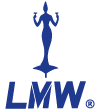Oct 28, 2025
3D Scanning in Foundry: Enhancing Casting Accuracy at LMW Foundry
Redefining Precision in Modern Foundries
In the world of metal casting, precision defines performance. Every dimension, surface contour, and tolerance play a crucial role in ensuring product reliability and customer satisfaction. At LMW Foundry, innovation drives excellence — and one of the key technologies powering this transformation is 3D Scanning in Foundry.
By integrating advanced 3D scanning systems into the casting workflow, LMW Foundry has redefined the standards of accuracy, efficiency, and consistency. This cutting-edge approach ensures that every casting meets the highest quality benchmarks while reducing lead times and rework.
The Role of 3D Scanning in Foundry Operations
3D Scanning in Foundry is a game-changer for quality control. It involves capturing the exact geometry of a casting or pattern using high-precision scanners that generate detailed 3D digital models. These models are compared with CAD designs to detect even the slightest dimensional deviations.
Traditional inspection techniques often rely on manual measurements and gauges — time-consuming methods prone to human error. In contrast, 3D Scanning in Foundry delivers complete surface data within minutes, providing a comprehensive understanding of shape, size, and alignment accuracy. The result is faster inspection cycles and superior dimensional validation.
How LMW Foundry Utilizes 3D Scanning for Casting Accuracy
At LMW Foundry, 3D scanning has become an integral part of the production ecosystem. The process begins at the pattern and core stage, where 3D Scanning in Foundry is used to verify tooling precision before casting begins.
Once the casting is complete, the 3D scanner digitally captures the component, and the data is compared against the original CAD model. Any variation in geometry, shrinkage, or warpage is instantly detected. This allows engineers at LMW Foundry to make quick corrections, ensuring flawless casting accuracy and consistent repeatability.
Through this advanced process, LMW Foundry minimizes material wastage, reduces inspection time, and delivers components that meet exact customer specifications.
Advantages of 3D Scanning in Foundry Applications
1. Enhanced Dimensional Accuracy
3D scanning ensures that every part precisely matches the design intent, enhancing product reliability and fit.
2. Faster Prototype Validation
New product development becomes quicker, as 3D Scanning in Foundry accelerates design verification and shortens time-to-market.
3. Improved Quality Assurance and Reporting
LMW Foundry uses detailed 3D inspection reports that help visualize deviations, improve process transparency, and documentation.
4. Reduced Production Costs and Time
With accurate first-time results, 3D Scanning in Foundry reduces rework, machining corrections, and overall project costs.
Integrating 3D Scanning with Digital Manufacturing
The integration of 3D Scanning in Foundry with digital tools like CAD/CAM and simulation has strengthened LMW Foundry’s commitment to smart manufacturing. The captured 3D data supports reverse engineering, rapid prototyping, and process optimization — enabling a fully digital production environment.
From concept to casting, LMW Foundry leverages this technology to maintain tight control over every stage, ensuring that the final product is not only dimensionally accurate but also consistent across production batches.
Setting New Standards in Foundry Excellence
3D Scanning in Foundry has empowered LMW Foundry to deliver superior casting accuracy, minimize errors, and embrace a data-driven approach to manufacturing excellence. With this technology, LMW Foundry continues to set new benchmarks in quality, precision, and customer satisfaction.
To learn more about how LMW Foundry is transforming the casting industry through innovation and digital integration, visit India's casting industry.


 info@lmwfoundry.com
info@lmwfoundry.com



